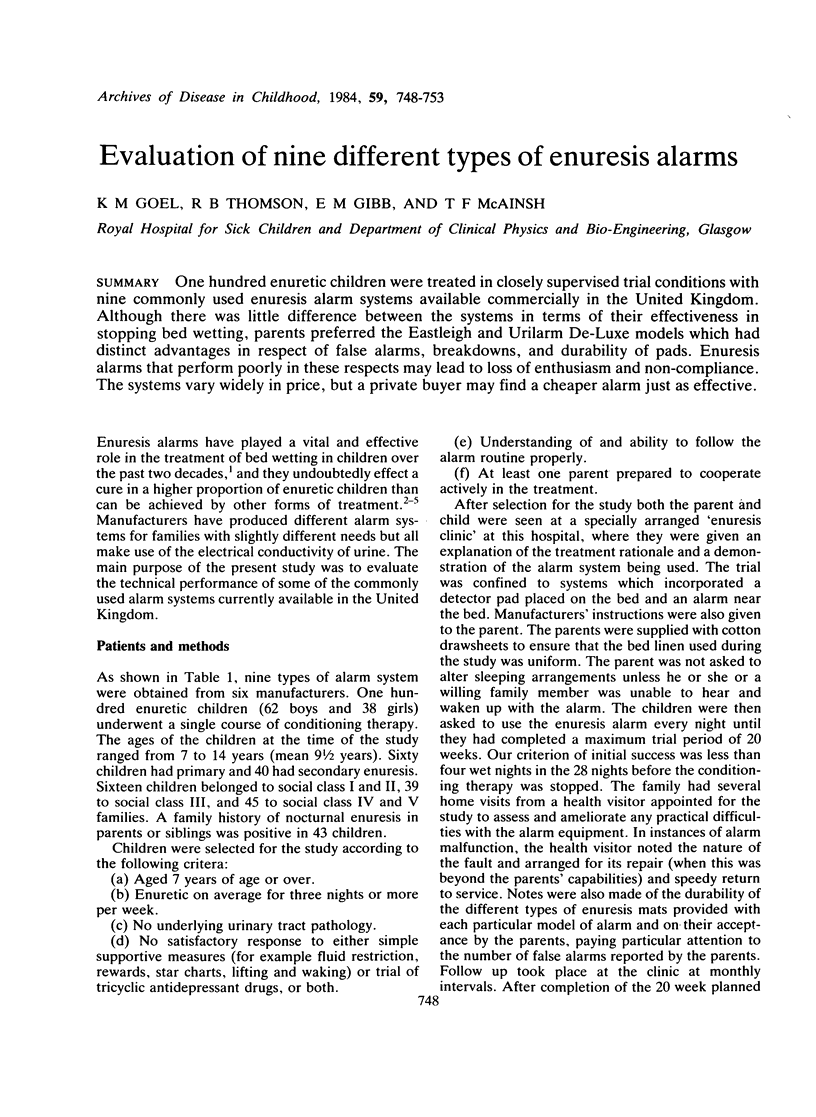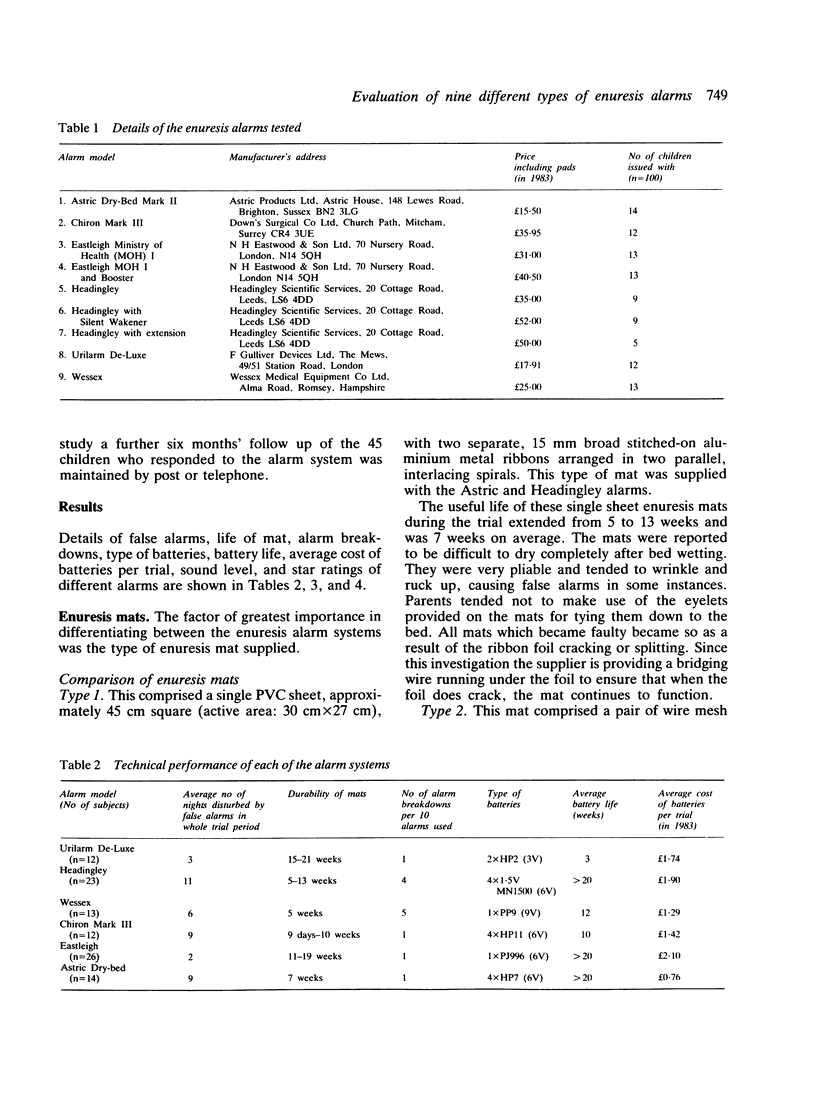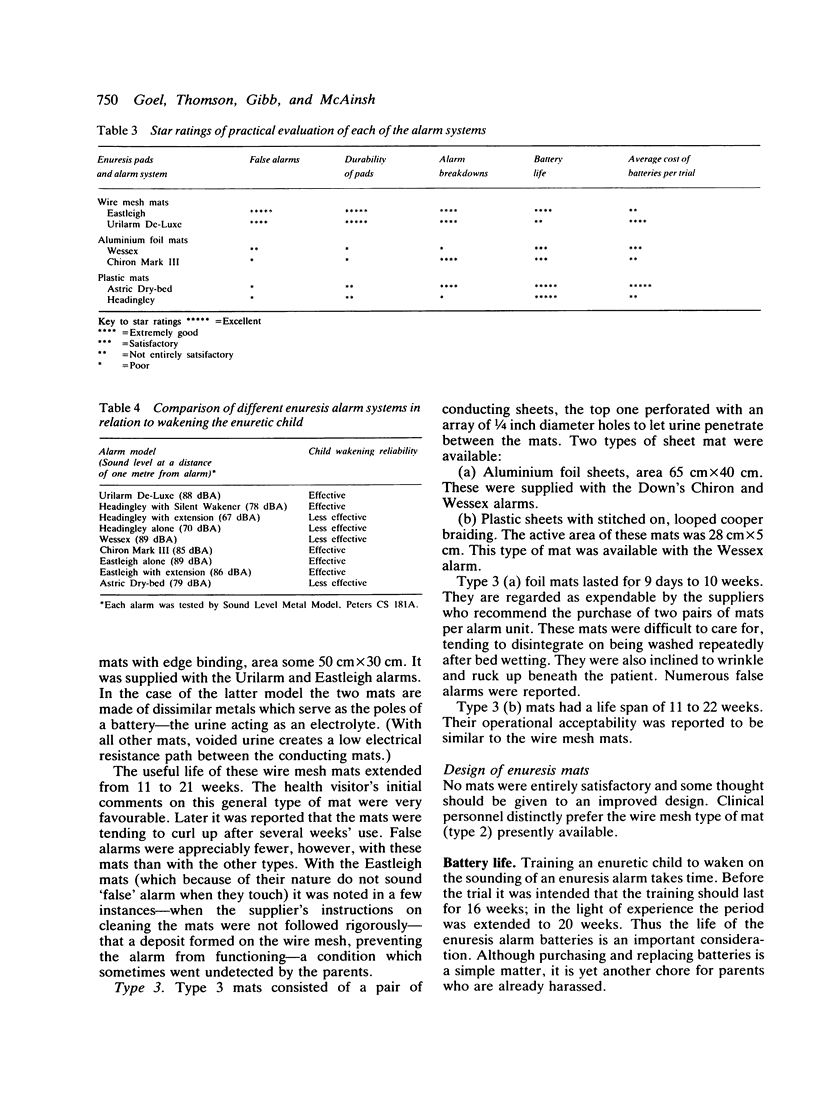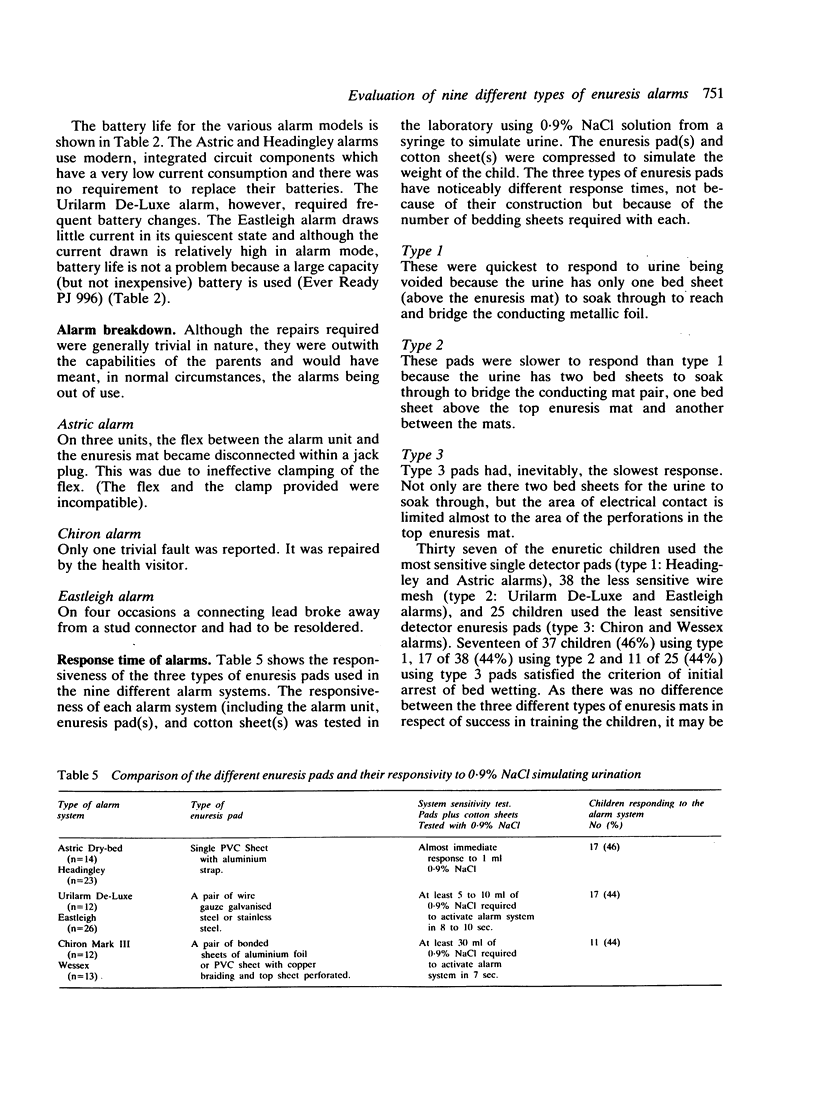Abstract
One hundred enuretic children were treated in closely supervised trial conditions with nine commonly used enuresis alarm systems available commercially in the United Kingdom. Although there was little difference between the systems in terms of their effectiveness in stopping bed wetting, parents preferred the Eastleigh and Urilarm De-Luxe models which had distinct advantages in respect of false alarms, breakdowns, and durability of pads. Enuresis alarms that perform poorly in these respects may lead to loss of enthusiasm and non-compliance. The systems vary widely in price, but a private buyer may find a cheaper alarm just as effective.
Full text
PDF




Selected References
These references are in PubMed. This may not be the complete list of references from this article.
- Dische S. Management of enuresis. Br Med J. 1971 Apr 3;2(5752):33–36. doi: 10.1136/bmj.2.5752.33. [DOI] [PMC free article] [PubMed] [Google Scholar]
- Forsythe W. I., Redmond A. Enuresis and the electric alarm: study of 200 cases. Br Med J. 1970 Jan 24;1(5690):211–213. doi: 10.1136/bmj.1.5690.211. [DOI] [PMC free article] [PubMed] [Google Scholar]


